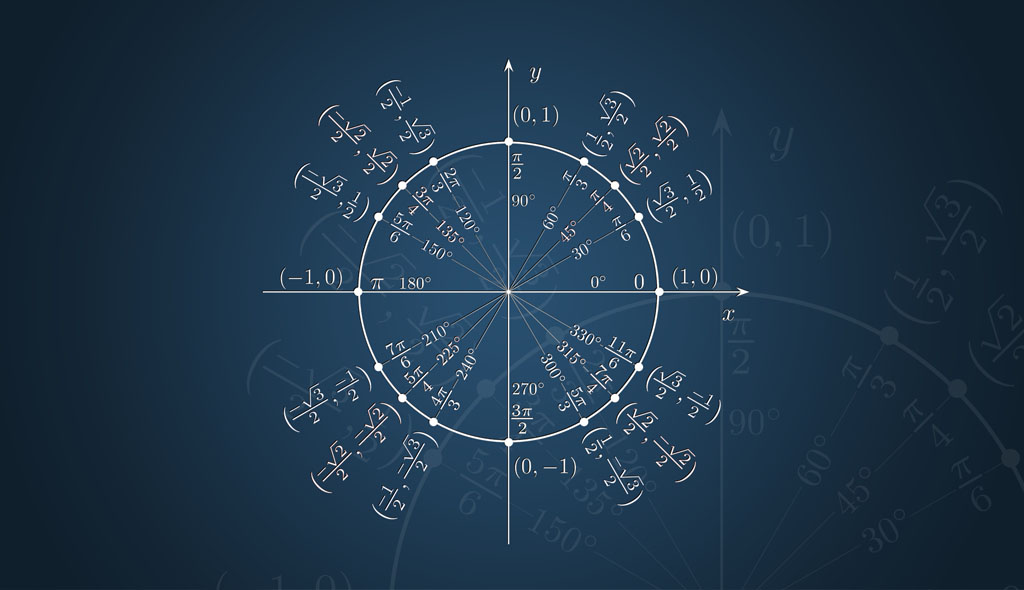Trigonometry Table

Trigonometry Table
An easy way to learn Trigonometry Table 0 to 360
What is Trigonometry?
Trigonometry is the branch of mathematics concerned with specific functions of angles, lengths and their relationship with triangles. There are six trigonometric ratios of a right angle, which are sine (sin), cosine (cos), tangent (tan), cotangent (cot), secant (sec), and cosecant (csc). These trigonometric ratios are associated only with right angle where one angle is always 90 degree displayed in the figure given below. Trigonometric functions are used in knowing the measure of unknown angles and lengths of sides. Let’s understand these trigonometric ratios and functions with the help of the figure given below.

sin A = a/c = perpendicular/hypotenuse
cos A = b/c = base/hypotenuse
tan A = a/b = perpendicular/base
csc A = c/a = hypotenuse/perpendicular
sec A = c/b = hypotenuse/base
cot A = b/a = base/perpendicular
Each side of the right angle has a name:
- Hypotenuse (c): The longest side of a right-angled triangle, which is on the opposite side of right angle.
- Base (b): Side on which perpendicular stands.
- Perpendicular (a): The side perpendicular to the base.
The values of trigonometric ratio table are applied to solve many problems in mathematical and associated scientific fields in ancient world. Trigonometry and its applications are still widely used into various fields such as architecture, survey, astronomy, engineering and also in crime scene investigations.
Steps to create Trigonometry Tables
Step 1: Create Table
Create a table with 8 rows and 9 columns. List all the angles in the top row such as 0, 30, 45, 60, till 360. Right all the trigonometric functions in the first column. Below is the example:
| Angles (In Degrees) | 0° | 30° | 45° | 60° | 90° | 180° | 270° | 360° | |
| Angles (In Radians) | |||||||||
| Sin | |||||||||
| Cos | |||||||||
| Tan | |||||||||
| cot | |||||||||
| Csc | |||||||||
| Sec | |||||||||
Step 2: Angles of radiance
The radian is a common unit of angle measure in trigonometry. It is important for a Mathematics student studying trigonometry must be proficient in converting back and forth between degrees and radians.
Second row will be the angles of radiance:
| Angles (In Radians) | 0° | π/6 | π/4 | π/3 | π/2 | π | 3π/2 | 2π | |
Step 3: Determine the value of sin
Divide all the value by 4 with all roots. For example, for 0°, by dividing all the angles with the value of sin you will get the below values:
| Angles (In Degrees) | 0° | 30° | 45° | 60° | 90° | 180° | 270° | 360° |
| Angles (In Radians) | 0 | π/6 | π/4 | π/3 | π/2 | π | 3π/2 | 2π |
| Sin | 0 | 1/2 | 1/2 | 3/2 | 1 | 0 | -1 | 0 |
Step 4: Determine the value of cos
The cos value is the opposite of sin angle. For cos divide of 4 by 4 with all root. For example,

By dividing all the angles with the value of cos you will get the below values
| Angles (In Degrees) | 0° | 30° | 45° | 60° | 90° | 180° | 270° | 360° |
| Angles (In Radians) | 0 | π/6 | π/4 | π/3 | π/2 | π | 3π/2 | 2π |
| cos | 1 | √3/2 | 1/√2 | 1/2 | 0 | -1 | 0 | 1 |
Step 5: Determine the value of tan
The tan is equal to sin divided by cos (tan= sin/cos). For example, for 0°
Tan 0° = 0/1 = 0
By dividing all the angles with the value of tan you will get the below values
| Angles (In Degrees) | 0° | 30° | 45° | 60° | 90° | 180° | 270° | 360° |
| Angles (In Radians) | 0 | π/6 | π/4 | π/3 | π/2 | π | 3π/2 | 2π |
| tan | 0 | 1/√3 | 1 | √3 | Not Defined | 0 | Not Defined | 1 |
Step 6: Determine the value of cot
The value of cot is always the opposite of tan. For example, for 0°
Cot 0° = 1/0 = Not Defined
By dividing all the angles with the value of cot you will get the below values
| Angles (In Degrees) | 0° | 30° | 45° | 60° | 90° | 180° | 270° | 360° |
| Angles (In Radians) | 0 | π/6 | π/4 | π/3 | π/2 | π | 3π/2 | 2π |
| csc | Not Defined | 2 | √2 | 2/√3 | 1 | Not Defined | -1 | Not Defined |
Step 7: Determine the value of sec
The value of sec is opposite value of cos. Thus, the value of sec 0° is the opposite of cos on 0°.
sec 0° = 1/1 = 1
| Angles (In Degrees) | 0° | 30° | 45° | 60° | 90° | 180° | 270° | 360° |
| Angles (In Radians) | 0 | π/6 | π/4 | π/3 | π/2 | π | 3π/2 | 2π |
| sec | 1 | 2/√3 | √2 | 2 | Not Defined | -1 | Not Defined | 1 |
Trigonometric Ratio Table:
The trigonometric formula given below will help you to find the values of trigonometric ratios for standard angles 0°, 30°, 45°, 60°, 90°, 180°, 270°, and 360. If you memorise these ratios the calculations will be very easy for you to solve the trigonometry questions in exams. That is why it is becomes very important for you to remember these values.
| Trigonometry Table 0° – 360° | ||||||||
| Angles (In Degrees) | 0° | 30° | 45° | 60° | 90° | 180° | 270° | 360° |
| Angles (In Radians) | 0 | π/6 | π/4 | π/3 | π/2 | π | 3π/2 | 2π |
| sin | 0 | 1/2 | 1/√2 | √3/2 | 1 | 0 | -1 | 0 |
| cos | 1 | √3/2 | 1/√2 | 1/2 | 0 | -1 | 0 | 1 |
| tan | 0 | 1/√3 | 1 | √3 | Not Defined | 0 | Not Defined | 1 |
| cot | Not Defined | √3 | 1 | 1/√3 | 0 | Not Defined | 0 | Not Defined |
| csc | Not Defined | 2 | √2 | 2/√3 | 1 | Not Defined | -1 | Not Defined |
| sec | 1 | 2/√3 | √2 | 2 | Not Defined | -1 | Not Defined | 1 |
How to remember formulas?
The above Trigonometry ratio table might look a bit intimidating for some students. We have brought you some mnemonics which will help you learn trigonometric ratio table. These trigonometry table tricks (mnemonics) can help you recall the formulas almost instantly. Mnemonics help to remember trigonometric table formulas and their relationships with the various trigonometric functions.
Remember the first letters of the given phrase:
SomePeopleHaveCurly BlackHairTurningPurpleBlue
SPH-CBH-TPB
SPH is for
Sine = Perpendicular/Hypotenuse
CBH is for
Cosine = Base/Hypotenuse
TPB is for
Tangent = Perpendicular/Base
This is the easiest way to learn sin cos tan formula and it will help you to solve problems related to Trigonometry. If you want any other explanations related to maths, do let us know.

